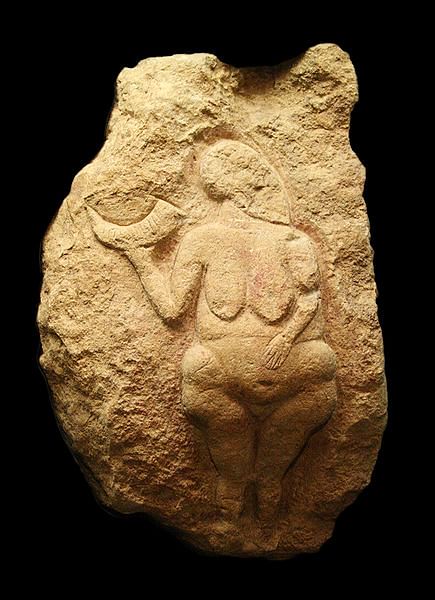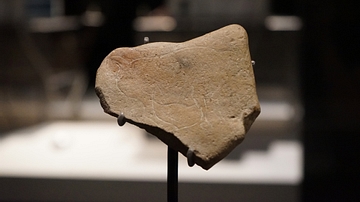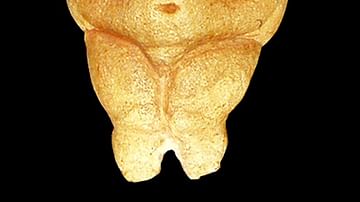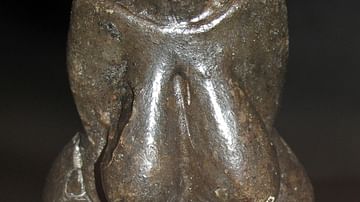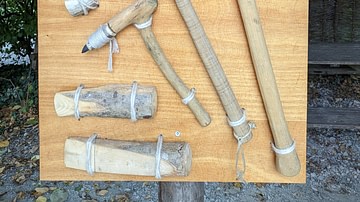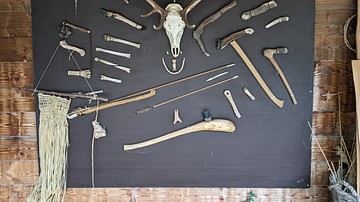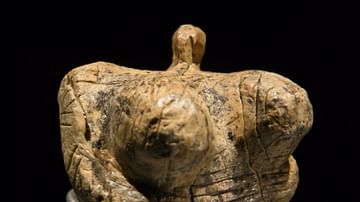Illustration
The Venus of Laussel, carved between 20,000 and 18,000 years ago, is a rare example of a pre-historic bas-relief. Her faceless, voluptuous figure is characteristic of the Venus figurines produced throughout Ice Age Europe. Many scholars believe that these female figures were used in fertility rituals or as representations of goddesses of fertility. In the case of the Venus of Laussel, they believe the thirteen lines carved into the upturned horn that she is holding may be associated with lunar and menstrual cycles. Her other hand rests upon her belly, over her womb, and her image was once tinted with red ochre, two other aspects of this piece that suggest fertility symbolism. The Venus of Laussel is now part of the collection of the Bordeaux Museum in France.
Cite This Work
APA Style
120. (2017, July 07). The Venus of Laussel. World History Encyclopedia. Retrieved from https://www.worldhistory.org/image/6866/the-venus-of-laussel/
Chicago Style
120. "The Venus of Laussel." World History Encyclopedia. Last modified July 07, 2017. https://www.worldhistory.org/image/6866/the-venus-of-laussel/.
MLA Style
120. "The Venus of Laussel." World History Encyclopedia. World History Encyclopedia, 07 Jul 2017, https://www.worldhistory.org/image/6866/the-venus-of-laussel/. Web. 17 Jul 2025.
